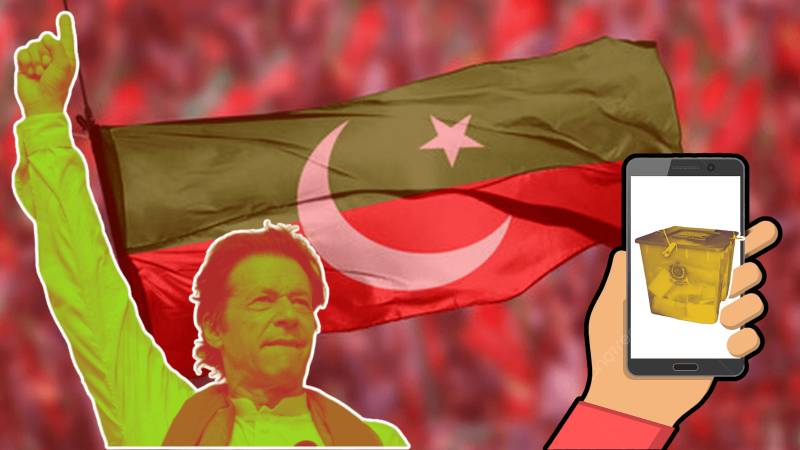
The recently concluded general elections marked one of the most unpredictable moments I have witnessed in my life so far.
Just a month before the elections, the electoral symbol 'Bat' was withdrawn from the Pakistan Tehreek-e-Insaf (PTI), compelling all PTI candidates contesting for both national and provincial assembly seats to participate in the elections as independent candidates. These candidates were assigned different symbols from the pool of symbols reserved for independent candidates by the Election Commission of Pakistan (ECP).
Mainstream analysts widely predicted that it would be exceedingly difficult for PTI candidates to garner support, as voters would not be able to easily recognise their new symbols.
To everyone's surprise, the election results went the other way: Independent candidates secured a majority. Now, people are talking about the PTI-backed independent candidates as deserving participants in forming a new government.
The question now arises: How did this happen? How did the calculations of the pundits prove to be wrong?
The answer lies in the utilisation of technology, including Artificial Intelligence (AI) and various digital media platforms. Let's not delve into why the PTI was unable to conduct an open election campaign with jalsas and rallies. I want to focus on how, despite the absence of an active campaign and paid promotion, the PTI managed to make their campaign more effective than any political party spending millions on television ads.
Frankly, our traditional political leaders still have an old-school mindset. To them, election campaigns require thousands of workers going door-to-door, convincing people to vote, plastering the walls of their constituencies with banners, and making too many last-minute promises. However, we witnessed the first-ever virtual jalsa, maybe in the world, which was organised by the PTI. They also showcased an AI-generated video message from their founder, who is currently in jail. The communication from the founder was also facilitated on "The Economist", which was also an AI-generated write-up.
Since 'X' (formerly known as Twitter) and Instagram experienced a slowdown during their virtual jalsa, PTI also created a platform on TikTok and held another [jalsa].
Meanwhile, our typical old-school politicians kept laughing at their actions. They were cynical about PTI only winning the elections on social media. These mediums, including WhatsApp, were vigorously used by PTI candidates to inform their voters about the symbols allotted to them in their constituency. This resulted in clarity for the voters about their favourite candidate on the day of the elections. And now, here we are.
It's crucial to understand that digital media is becoming the main medium for people to communicate and influence each other. This is an era of direct communication, exemplified by the PTI founder, connecting with his followers despite being in jail. Through this direct communication, he encouraged his supporters to respond in the form of votes.
Unlike PTI's use of modern technology, we saw the EMS (Election Management System, a software designed by the ECP for managing election results) crashing all over Pakistan during the 2024 elections, just like in 2018 when the Results Transmission System (RTS) had issues. This is worrying in today's world of advanced technology. Despite everything being easily accessible, the announcement of results was significantly delayed, raising eyebrows worldwide and casting doubts on the integrity of the electoral process in the eyes of the public and global community.
The Election Commission could not handle the online updates, so the returning officers (RO) had to play postman with the Form-45s. With a whopping Rs47 billion in the kitty, you would think they could simply WhatsApp a picture, right? But no, no such luck.
While PTI supporters digitally provided pictorial evidence of their victory to their voters by sharing images of the signed Form-45s, the ROs were stuck in the Stone Age, unable to even reach the Election Commission. This delay in results not only highlighted the technological shortcomings but also exposed the misplaced priorities of the state, having a portal that could not perform on the big day.
In today's era of information technology and AI, relying solely on traditional media to shape narratives about the election process is no longer sufficient. With the widespread accessibility of the internet, even rural communities have the means to access and disseminate information rapidly. Any claims made on television can be swiftly challenged by counter-information circulating on social media platforms.
It is imperative for political entities to recognise this shift and actively engage with digital tools and strategies. Ignoring issues highlighted on social media is akin to turning a blind eye to the pulse of the public.

